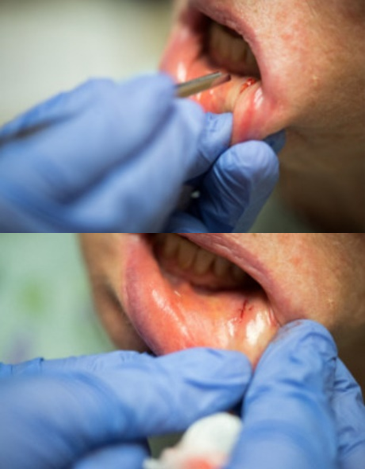Download English PDF, 872KB, PDF
Download Chinese PDF, 1MB, PDF
What is Sjögren’s Syndrome?
Sjögren's syndrome is a chronic autoimmune condition. It causes inflammation and destruction of the tear-producing and salivary glands, resulting in abnormal dryness of the mouth, eyes and/or other tissues. Other organs less frequently affected include joints and the blood system. Although dry eyes and dry mouth are the main symptoms of Sjögren’s syndrome, they may also be caused by other reasons such as ageing, previous eye surgeries and medications.
Primary Sjögren's syndrome occur on its own, while secondary Sjögren's syndrome develops in association with another autoimmune disease such as rheumatoid arthritis (RA), scleroderma or systemic lupus erythematosus (SLE).
What Causes Sjögren’s Syndrome?
The exact cause of Sjögren's syndrome is unknown. It is believed to be caused by genetic, environmental factors and/or possible viral infection which activate our immune systems to attack our healthy cells, resulting in damage.
Who Gets Sjögren’s Syndrome?
Sjögren's syndrome is more common than originally believed. This disorder is nine times more common in females compared to males.
Patients usually start developing symptoms between 40 and 50 years old but it may occur at any age.
What are the Signs and Symptoms of Sjögren’s Syndrome?
Sjögren's syndrome causes dry eyes and mouth that result in:
- Irritation, gritty or painful burning sensation in the eyes
- Eye redness
- Difficulty eating dry food (e.g. biscuit, bread and rice)
- Lips and tongue may feel sore and even crack due to dryness
- Dental cavities due to poor oral hygiene, contributed by the loss of anti-bacterial property of saliva. Food also tends to stick to the teeth.
Other body parts such as the nose, throat, skin or vagina may also be dry.
Other symptoms and signs include:
- Swelling of the salivary glands, which appear as swellings at the sides of the face and below the chin
- Joint pain and swelling
- Skin rashes
- Lack of energy and feeling tired all the time
- Muscle aches
In a small number of people, Sjögren's syndrome may be associated with lymphoma, a cancer of the lymph glands.
Schirmer’s test.
Photo retrieved from A.D.A.M. eClinicalWorks.
How is Sjögren’s Syndrome Diagnosed?
The following tests may be done to confirm the diagnosis:
- Blood tests: to detect specific autoantibodies (anti-Ro/anti-La).
- Eye test: Schirmer’s test is a quick assessment of tear production. A tiny strip of filter paper is placed inside the lower eyelids. After 5 minutes, the paper is removed and tested for its moisture content.
- Biopsy: removing a small piece of salivary gland tissue from the inside of the lower lip to look for signs of inflammation.
- Imaging tests: includes ultrasound imaging of salivary glands, X-ray imaging to detect how much saliva flows into the mouth and gamma scans which provides information about salivary gland function.

Minor salivary gland biopsy.
Photos retrieved from University of Wisconsin Hospitals and Clinics Authority.
How is Sjögren’s Syndrome Managed?
There is no cure for Sjögren's syndrome. However, effective treatment is available to relieve symptoms, reduce inflammation and prevent organ damage.
- Dry eyes: artificial tears, anti-inflammatory eye drops, regular eye checks by an ophthalmologist, punctal plugs to block ducts so tears stay on the eyes keeping them moist
- Dry mouth: oral lubricants, saliva substitutes, regular dental care as dry mouth increases risk of dental cavities and tooth decay. Avoid smoking as it can worsen the dryness, avoid acidic beverages such as carbonated drinks as it can harm the enamel of your teeth
- Vaginal dryness: vaginal lubricants, vaginal oestrogen therapy, gynaecology consultation
- Arthritis: anti-inflammatory, steroids, disease-modifying anti-rheumatic drugs (DMARDs)
- Major organ involvement: corticosteroids, immunosuppressants
What is the Outlook of Sjögren’s Syndrome?
The outlook for Sjögren's syndrome is generally good as majority of the patients have limited disease that only affect tear-producing and salivary glands. For those who experience symptoms affecting other organs, there are effective medications available to control the condition if diagnosed early.
